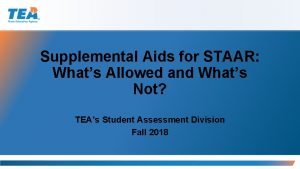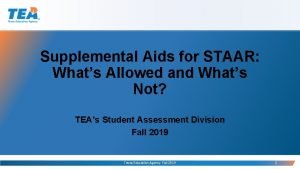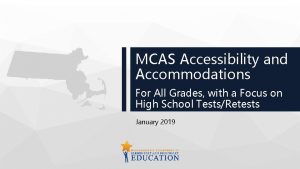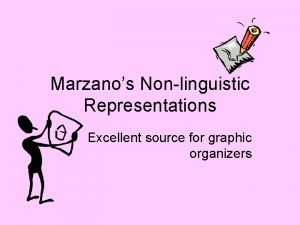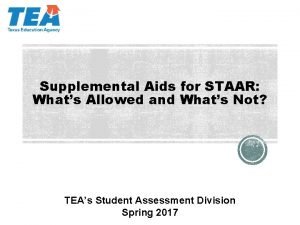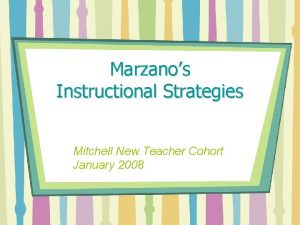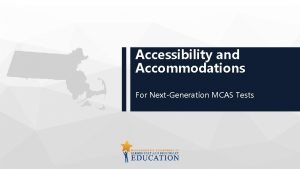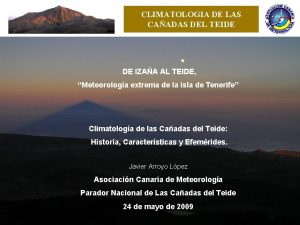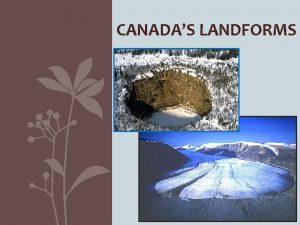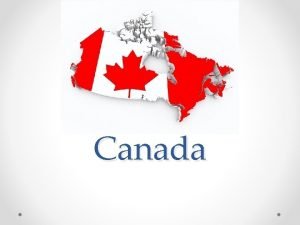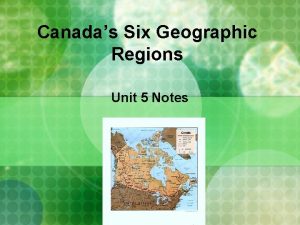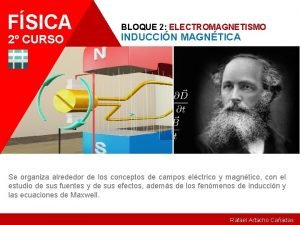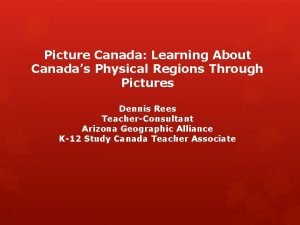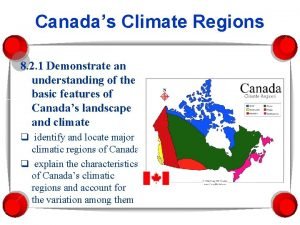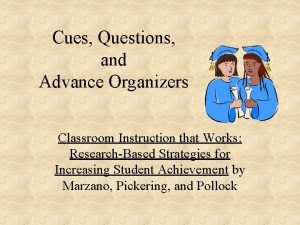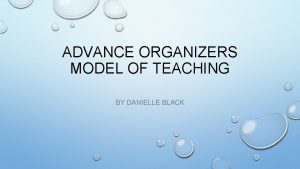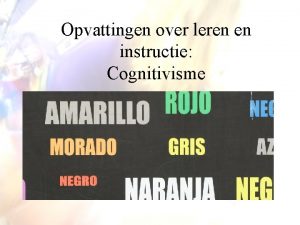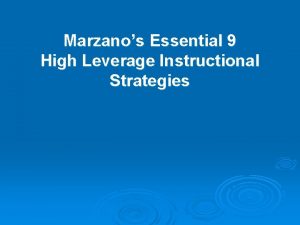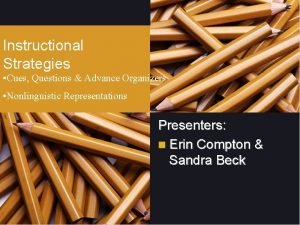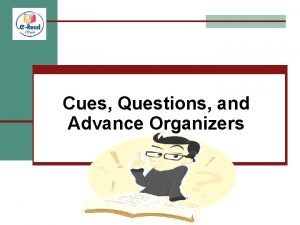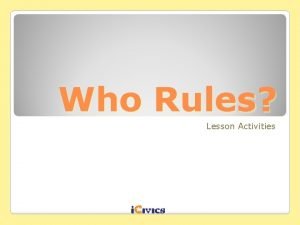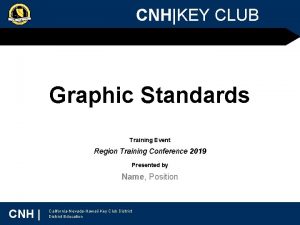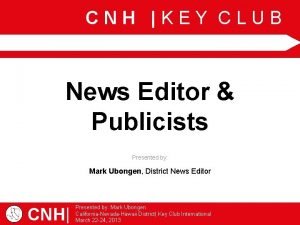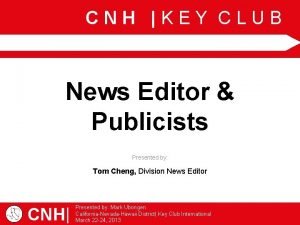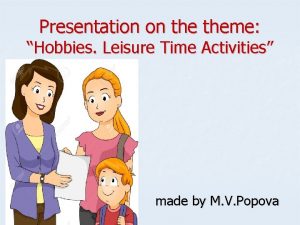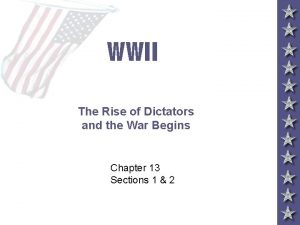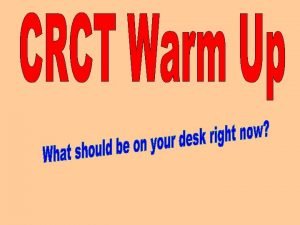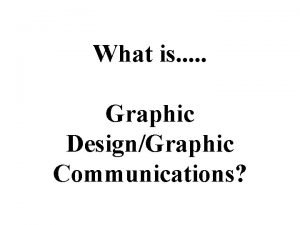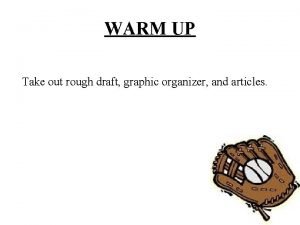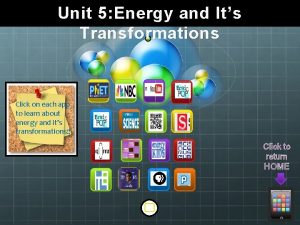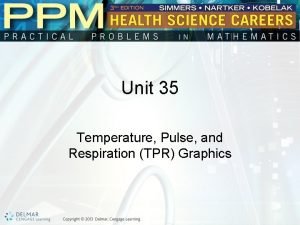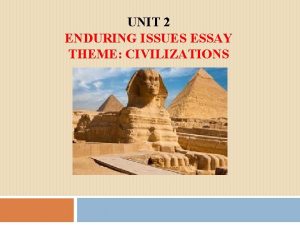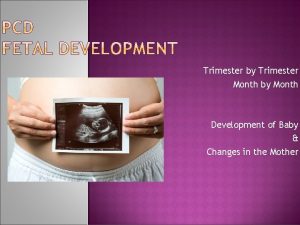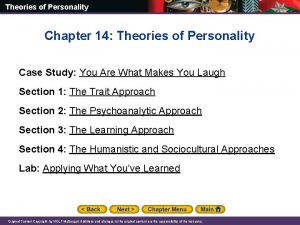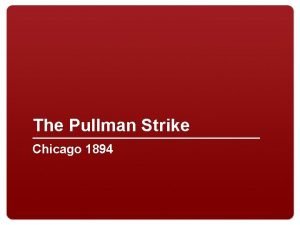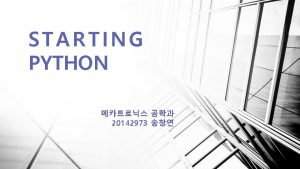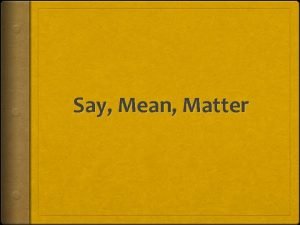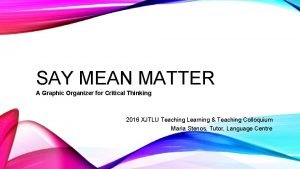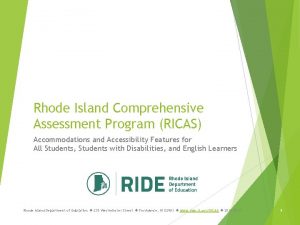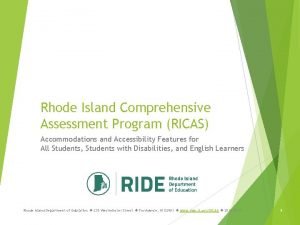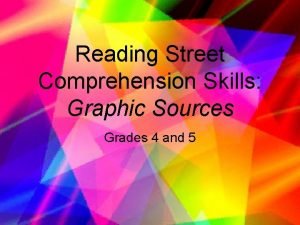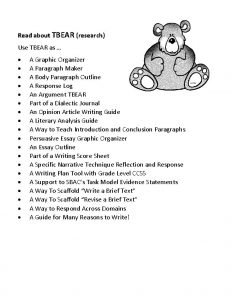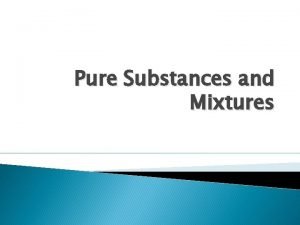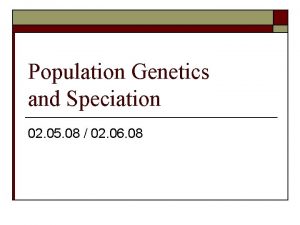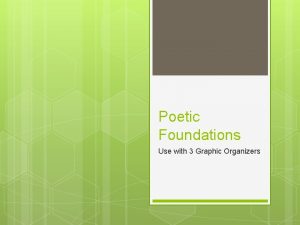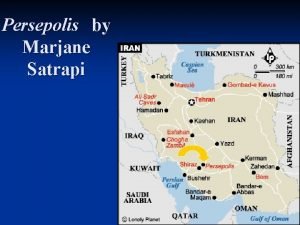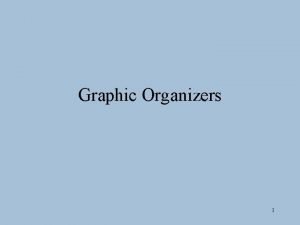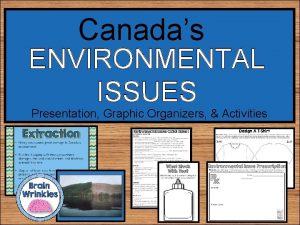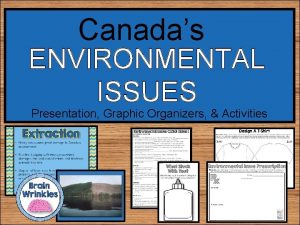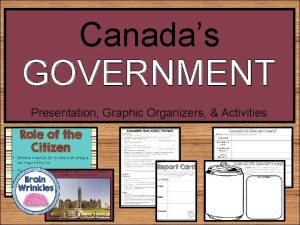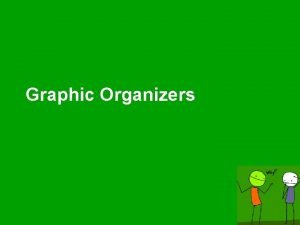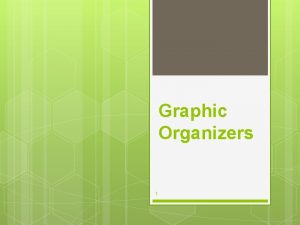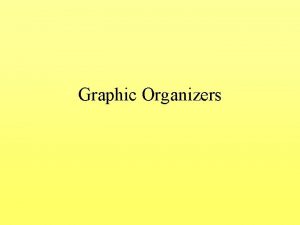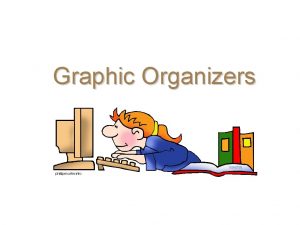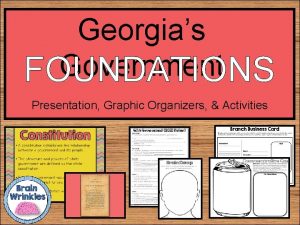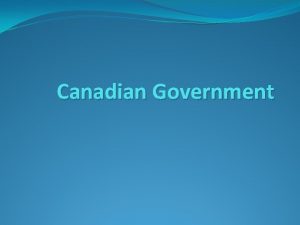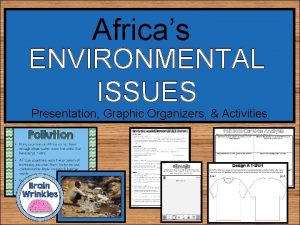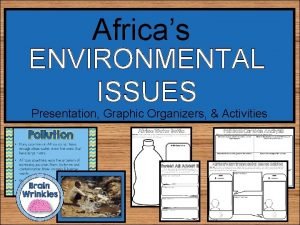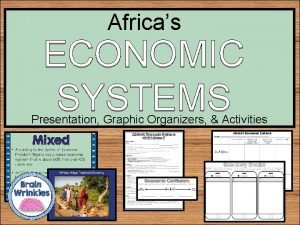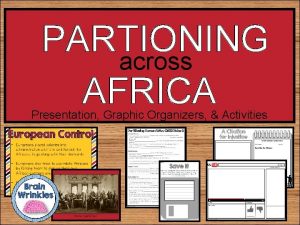Canadas GOVERNMENT Presentation Graphic Organizers Activities STANDARDS SS



































































- Slides: 67

Canada’s GOVERNMENT Presentation, Graphic Organizers, & Activities

STANDARDS: SS 6 CG 1 The student will compare and contrast various forms of government. a. Describe the ways government systems distribute power: unitary, confederation, and federal. b. Explain how governments determine citizen participation: autocratic, oligarchic, and democratic. c. Describe the two predominant forms of democratic governments: parliamentary and presidential. SS 6 CG 3 The student will explain the structure of the national government of Canada. a. Describe the structure of the Canadian government as a constitutional monarchy, a parliamentary democracy, and a federation, distinguishing the role of the citizen in terms of voting and personal freedoms. © Brain Wrinkles

TEACHER INFO: CLOZE Notes • The next pages are handouts for the students to use for note-taking during the presentation. (Print front to back to save paper and ink. ) • Check the answers as a class after the presentation. © Brain Wrinkles

Canada’s Gov. CLOZE Notes 1 Let’s Review • Unitary--power is held by ________________ authority • Confederation--association of independent states that agree to certain limitations on their freedoms by ________________ • Federal-- ________________ between central authority & several regional authorities • Autocracy-- 1 person possesses ________________ & citizens have limited role in government • Oligarchy-- ________________ exercises control & citizens have limited role in government • Democracy--supreme power is vested in the people & exercised by them directly or indirectly through a system of representation involving ________________ • Parliamentary– citizens ________________ of Parliament, and then the members select the leader • Leader works with or through the ________________ • Presidential--system of government in which the leader is constitutionally independent of the legislature; citizens directly ________________ • Leader works ________________ from legislature CANADA Background • ________________, Canada was under the authority of the British constitution. • In that year, Canada established its ________________ that outlines the country’s laws and freedoms. • Canada still has ________________ today, which are seen in the country’s government. Federal • Canada has a ________________ , which means that the national government and the provincial & territorial governments SHARE power. • There are ________________ and 3 territories in Canada. • Canada’s central government handles things like ________________ , while the local governments have control over local affairs. © Brain Wrinkles

Canada’s Gov. CLOZE Notes 2 Constitutional Monarchy • Canada can be described as a ________________ , which means that it has its own constitution but its head of state is the monarch of Great Britain. • Since the monarch does not live in Canada, she chooses a governorgeneral to ______________. • Both of these roles are mostly ceremonial and hold __________. Leadership • Head of State: Monarch of the United Kingdom (presently, Queen Elizabeth II); ________________ with little political power • Governor General: stands in ________________ • Prime Minister: holds the ________________ ; works closely with the legislature How Leaders Are Chosen • Governor General: ________________ on the advice of the Prime Minister; serves a 5 -year term • Prime Minister: is the ________________ in the House of Commons; indirectly elected by the people Legislature • A country’s legislature is its central authority (___________ ). • Canada’s legislature is called ________________. • The citizens of Canada ________________ of Parliament. • Members of Parliament belong to many ________________. • The Parliament of Canada is the country’s ________________ legislature. • It consists of: • 1. Senate (105 seats): members are ________________ with advice from the Prime Minister. • Members are ________________ by the people; can serve until they are 75 years old • 2. House of Commons (308 seats): members are ________________ by the people • Members serve ________________ • The largest political party in the House ________________. © Brain Wrinkles

Canada’s Gov. CLOZE Notes 3 Parliamentary Democracy • Whichever political party has the ________________ in the legislature selects the prime minister. • This is the ________________ between a Presidential Democracy and a Parliamentary Democracy! • Parliamentary Democracy – legislature (Parliament) ________________ (Executive Leader) • Citizens vote for members of Parliament, and then members ________________. • In Canada, the prime minister and his cabinet are members of the legislature, and they must ________________. • The government will stay in office for a specified period unless the prime minister ________________ in the legislature on an important vote. • If that happens, the prime minister ________________ and a new one is chosen immediately. Role of the Citizen • Citizens must be ________________ , but voting is not required by law. • As a democracy, Canada’s citizens can ________________ and elections. • The citizens ________________ of the Parliament, who then elects the prime minister. • Canada’s constitution guarantees citizens ________________ and freedoms, much like what we have in the United States. • Some examples include equal rights, ________________ , freedom of religion, and right to a fair trial. © Brain Wrinkles

Canada’s Gov. CLOZE Notes 1 KEY Let’s Review • Unitary--power is held by one central authority • Confederation--association of independent states that agree to certain limitations on their freedoms by joining together • Federal--power is divided between central authority & several regional authorities • Autocracy-- 1 person possesses unlimited power & citizens have limited role in government • Oligarchy-- small group exercises control & citizens have limited role in government • Democracy--supreme power is vested in the people & exercised by them directly or indirectly through a system of representation involving free elections • Parliamentary– citizens elect members of Parliament, and then the members select the leader • Leader works with or through the legislature • Presidential--system of government in which the leader is constitutionally independent of the legislature; citizens directly elect leader • Leader works separate from legislature CANADA Background • Until 1982, Canada was under the authority of the British constitution. • In that year, Canada established its own constitution that outlines the country’s laws and freedoms. • Canada still has ties to Great Britain today, which are seen in the country’s government. Federal • Canada has a federal system, which means that the national government and the provincial & territorial governments SHARE power. • There are 10 provinces and 3 territories in Canada. • Canada’s central government handles things like trade and national security, while the local governments have control over local affairs. © Brain Wrinkles

Canada’s Gov. CLOZE Notes 2 KEY Constitutional Monarchy • Canada can be described as a constitutional monarchy, which means that it has its own constitution but its head of state is the monarch of Great Britain. • Since the monarch does not live in Canada, she chooses a governorgeneral to act in her place. • Both of these roles are mostly ceremonial and hold very little power. Leadership • Head of State: Monarch of the United Kingdom (presently, Queen Elizabeth II); mostly ceremonial with little political power • Governor General: stands in for the monarch • Prime Minister: holds the most political power; works closely with the legislature How Leaders Are Chosen • Governor General: appointed by the monarch on the advice of the Prime Minister; serves a 5 -year term • Prime Minister: is the leader of the majority party in the House of Commons; indirectly elected by the people Legislature • A country’s legislature is its central authority (law-making body). • Canada’s legislature is called Parliament. • The citizens of Canada vote for members of Parliament. • Members of Parliament belong to many different political parties. • The Parliament of Canada is the country’s bicameral legislature. • It consists of: • 1. Senate (105 seats): members are appointed by the governor general with advice from the Prime Minister. • Members are not elected by the people; can serve until they are 75 years old • 2. House of Commons (308 seats): members are directly elected by the people • Members serve 5 -year terms • The largest political party in the House elects the Prime Minister. © Brain Wrinkles

Canada’s Gov. CLOZE Notes 3 KEY Parliamentary Democracy • Whichever political party has the most members in the legislature selects the prime minister. • This is the major difference between a Presidential Democracy and a Parliamentary Democracy! • Parliamentary Democracy – legislature (Parliament) chooses Head of Government (Executive Leader) • Citizens vote for members of Parliament, and then members choose the prime minister. • In Canada, the prime minister and his cabinet are members of the legislature, and they must answer to the legislature. • The government will stay in office for a specified period unless the prime minister loses support of the majority in the legislature on an important vote. • If that happens, the prime minister must resign and a new one is chosen immediately. Role of the Citizen • Citizens must be 18 to vote, but voting is not required by law. • As a democracy, Canada’s citizens can participate in voting and elections. • The citizens vote for members of the Parliament, who then elects the prime minister. • Canada’s constitution guarantees citizens many personal rights and freedoms, much like what we have in the United States. • Some examples include equal rights, freedom of speech, freedom of religion, and right to a fair trial. © Brain Wrinkles

Canada’s Government Constitutional Monarchy Parliamentary Democracy Federation © Brain Wrinkles

Let’s Review Government Systems – Who has the power? • Unitary--power is held by one central authority • Confederation--association of independent states that agree to certain limitations on their freedoms by joining together • Federal--power is divided between © Brain Wrinkles

Let’s Review Government TYPES– HOW DO CITIZENS PARTICIPATE? • Autocracy-- 1 person possesses unlimited power & citizens have limited role in government • Oligarchy-- small group exercises control & citizens have limited role in government • Democracy--supreme power is vested © Brain Wrinkles

Let’s Review TWO TYPES OF DEMOCRATIC GOVERNMENTS: • Parliamentary– citizens elect members of Parliament, and then the members select the leader o Leader works with or through the legislature • Presidential--system of government in which the leader is constitutionally independent of the legislature; citizens directly elect leader © Brain Wrinkles

CANADA © Brain Wrinkles

Background • Until 1982, Canada was under the authority of the British constitution. • In that year, Canada established its own constitution that outlines the country’s laws and freedoms. • Canada still has ties to Great Britain today, which are seen in the country’s government. © Brain Wrinkles

Parliament Hill, in Ottawa, Ontario, is home to Canada’s central government. © Brain Wrinkles

© Brain Wrinkles

Federal System • Canada has a federal system, which means that the national government and the provincial & territorial governments SHARE power. • There are 10 provinces and 3 territories in Canada. • Canada’s central government handles things like trade and national security, while the local governments have control over local affairs. © Brain Wrinkles

Federal Governments © Brain Wrinkles

• Constitutional Monarchy Canada can be described as a constitutional monarchy, which means that it has its own constitution but its It has head of state is the monarch of Great Britain. • Since the monarch does not live in Canada, she chooses a governorgeneral to act in her place. • Both of these roles are mostly © Brain Wrinkles

Leadership 1. Head of State: Monarch of the United Kingdom (presently, Queen Elizabeth II); mostly ceremonial with little political power 2. Governor General: stands in for the monarch © Brain Wrinkles

Her Majesty Queen Elizabeth II © Brain Wrinkles

His Excellency The Right Honorable David Johnston © Brain Wrinkles Governor General

The Right Honorable Justin Trudeau © Brain Wrinkles Prime Minister

How Leaders Are Chosen • Governor General: appointed by the monarch on the advice of the Prime Minister; serves a 5 -year term • Prime Minister: is the leader of the majority party in the House of © Brain Wrinkles

Legislature • A country’s legislature is its central authority (law-making body). • Canada’s legislature is called Parliament. • The citizens of Canada vote for members of Parliament. • Members of Parliament belong to © Brain Wrinkles

Political Parties in Canada’s Government © Brain Wrinkles

Legislature • The Parliament of Canada is the country’s bicameral legislature. 1. Senate (105 seats): members are appointed by the governor general with advice from the Prime Minister • Members are not elected by the people; can serve until they are 75 years old 2. House of Commons (308 seats): members are directly elected by the people © Brain Wrinkles

© Brain Wrinkles Canadian Senate

Canadian House of Commons © Brain Wrinkles

Parliamentary Democracy • Whichever political party has the most members in the legislature selects the prime minister. • This is the major difference between a Presidential Democracy and a Parliamentary Democracy! • Parliamentary Democracy – legislature (Parliament) chooses Head of Government (Executive Leader) © Brain Wrinkles

Parliamentary Democracy • In Canada, the prime minister and his cabinet are members of the legislature, and they must answer to the legislature. • The government will stay in office for a specified period unless the prime minister loses support of the majority in the legislature on an important vote. • If that happens, the prime minister must resign and a new one is chosen © Brain Wrinkles

Role of the Citizen • Citizens must be 18 to vote, but voting is not required by law. • As a democracy, Canada’s citizens can participate in voting and elections. • The citizens vote for members of the Parliament, who then elects the prime minister. © Brain Wrinkles

Role of the Citizen • Canada’s constitution guarantees citizens many personal rights and freedoms, much like what we have in the United States. • Some examples include equal rights, freedom of speech, © Brain Wrinkles

TEACHER INFO: Government Chart • Print off the Government chart for each student. • The students will complete the chart after discussing the presentation. • Check the answers as a class to be sure that all charts are completed correctly. © Brain Wrinkles

Canada’s Government Directions: Complete the chart below after discussing the presentation. Background Distribution of Power Constitutional Monarchy Type of Government Executive Branch How are Leaders Chosen? Legislative Branch Role of the Citizen © Brain Wrinkles

Canada’s Government KEY Directions: Complete the chart below after discussing the presentation. Background Canada broke away from Great Britain’s constitution when it established its own in 1982; still has ties to British government Distribution of Power Federal system Constitutional Monarchy Canada has its own constitution but British monarch is still Head of State (little political power, mostly ceremonial) Type of Government Executive Branch How are Leaders Chosen? Parliamentary Democracy Head of State = Monarch of Great Britain Governor General = stands in for Monarch Prime Minister – most political power Monarch – hereditary Governor-general – appointed by monarch for 5 -year term Prime Minister – leader of the majority party in the House of Commons, not directly elected by the citizens Legislative Branch Parliament (bicameral legislature) – Senate and House of Commons (elects prime ministers) Role of the Citizen Can vote at 18, not required by law Constitution outlines many personal freedoms and rights (similar to US) © Brain Wrinkles

TEACHER INFO: Cookin’ Up Canada’s Government (Recipe) • Print off the Cookin’ Up Canada’s Government handout for each student. • Have the students write a “recipe” for Canada’s government (include several ingredients that were used to form the government). • Next, they will write out the special cooking instructions for bringing the ingredients together. © Brain Wrinkles

Cookin’ Up Canada’s Government Directions: Write a “recipe” for Canada’s government. Include several ingredients that were used to form the government. Also, write out the special cooking instructions for bringing the ingredients together. Ingredients: - Instructions: ________________________________________________________ ________________________________________________________ ________________________________________________________ © Brain Wrinkles

TEACHER INFO: Commemorative Can • Print off the Create A Can handout for each student. • The students will design a soda can to represent the foundations of Canada’s government. The can should include symbols & words to represent Canada’s government. • In the textbox, the students will describe what the different symbols on the can represent and how they are important to Canada’s government. © Brain Wrinkles

Can-ada’s Government Directions: Design a soda can to represent the foundations of Canada’s government. The can should include symbols and words to represent Canada’s government. In the textbox, describe what the symbols mean and how they are important to Canada’s government. Can Description: © Brain Wrinkles

TEACHER INFO: True/False Review • Print off the cards on the following page (or have students quickly make their own on scrap paper). • Project the True/False statements and have the students hold up the correct end of the card. • After you scan to see the students’ answers, display the Answer slide. © Brain Wrinkles

© Brain Wrinkles TRUE FALSE © Brain Wrinkles

True or False? In a democracy, citizens play an important role because they are able to vote for leaders. © Brain Wrinkles

ANSWER: True © Brain Wrinkles

True or False? Canada has a presidential democracy. © Brain Wrinkles

ANSWER: False – Parliamentary Democracy © Brain Wrinkles

True or False? In a unitary system, power is shared between the central government and regional/local authorities. © Brain Wrinkles

ANSWER: False - Federal © Brain Wrinkles

True or False? Although Canadians adopted their own constitution in 1982, they still have ties with the British government. © Brain Wrinkles

ANSWER: True © Brain Wrinkles

True or False? Citizens do not directly vote for the prime minister in Canada. © Brain Wrinkles

ANSWER: True © Brain Wrinkles

True or False? In a democracy, a ruler has absolute power and the citizens do not possess the right to choose their own leaders. © Brain Wrinkles

ANSWER: False - Autocracy © Brain Wrinkles

True or False? Both Canada and Russia have federal systems of government. © Brain Wrinkles

ANSWER: True © Brain Wrinkles

True or False? Canadian citizens have many personal freedoms guaranteed to them in their constitution. © Brain Wrinkles

ANSWER: True © Brain Wrinkles

True or False? In a presidential democracy, citizens vote for members of the legislature and the members select the country’s leader. © Brain Wrinkles

ANSWER: False – Parliamentary Democracy © Brain Wrinkles

True or False? The head of Canada’s government (person with the most political power) is the governor-general. © Brain Wrinkles

ANSWER: False – Prime Minister © Brain Wrinkles

TEACHER INFO: TICKET OUT THE DOOR • Print off the Ticket Out the Door for each student (two-per-page). • Have the students give Canada a grade based on its government. • In the comments section, explain why they chose the grade/effort and what things the country can do to improve. © Brain Wrinkles

Name: Report Card You are the teacher! Give Canada a grade based on its government. In the comments section, explain why you chose the grade/effort and what things the country can do to improve. Canada Name: Grade: Effort: Comments © Brain Wrinkles

Thank You! Thank you so much for downloading this file. I sincerely hope you find it helpful and that your students learn a lot from it! I look forward to reading your feedback in my store. If you like this file, you might want to check out some of my other products that teach social studies topics in creative, engaging, and hands-on ways. Best wishes, Ansley at Brain Wrinkles

Terms of Use © Brain Wrinkles. Your download includes a limited use license from Brain Wrinkles. The purchaser may use the resource for personal classroom use only. The license is not transferable to another person. Other teachers should purchase their own license through my store. This resource is not to be used: • By an entire grade level, school, or district without purchasing the proper number of licenses. For school/district licenses at a discount, please contact me. • As part of a product listed for sale or free by another individual. • On shared databases. • Online in any way other than on password-protected website for student use only. © Copyright Brain Wrinkles. All rights reserved. Permission is granted to copy pages specifically designed for student or teacher use by the original purchaser or licensee. The reproduction of any other part of this product is strictly prohibited. Copying any part of this product and placing it on the Internet in any form (even a personal/classroom website) is strictly forbidden. Doing so makes it possible for an Internet search to make the document available on the Internet, free of charge, and is a violation of the Digital Millennium Copyright Act (DMCA). Thank you, Ansley at Brain Wrinkles Clipart, fonts, & digital papers for this product were purchased from:
 Tea blank graphic organizers
Tea blank graphic organizers Pictorial models of geometric figures
Pictorial models of geometric figures Staar grammar and mechanics rules
Staar grammar and mechanics rules Organizers
Organizers Mcas accessibility and accommodations
Mcas accessibility and accommodations Nonlinguistic representations examples in the classroom
Nonlinguistic representations examples in the classroom Grammar and mechanics rules for staar 2021
Grammar and mechanics rules for staar 2021 Marzano graphic organizers
Marzano graphic organizers Mcas accessibility and accommodations
Mcas accessibility and accommodations Temperatura en las cañadas del teide
Temperatura en las cañadas del teide Canadas landforms
Canadas landforms 90 of the canadian population lives within
90 of the canadian population lives within Whats canadas longest river
Whats canadas longest river Unit 5 food national geographic
Unit 5 food national geographic Canadas head of state
Canadas head of state What is canadas economic system
What is canadas economic system Iespm granada
Iespm granada Canadas physical regions
Canadas physical regions Canadas climate
Canadas climate Graphic weight example
Graphic weight example Ghost graphic story graphic and wayfinding
Ghost graphic story graphic and wayfinding Skimming organizer example
Skimming organizer example Advance organizer model example
Advance organizer model example Expository advance organizers examples
Expository advance organizers examples Dear organizers
Dear organizers Register and signaling vocabulary
Register and signaling vocabulary Marzano's 9 high yield strategies
Marzano's 9 high yield strategies Cues questions and advance organizers
Cues questions and advance organizers Cues questions and advance organizers
Cues questions and advance organizers Types of government
Types of government Key club graphic standards
Key club graphic standards Cnh key club
Cnh key club Editor de cnh
Editor de cnh Operating activities vs investing activities
Operating activities vs investing activities Indoor vs outdoor sports
Indoor vs outdoor sports Support activities and primary activities
Support activities and primary activities Definition of primary activities
Definition of primary activities State and federal constitutions
State and federal constitutions Customer defined service standards
Customer defined service standards Presentation about leisure time
Presentation about leisure time Occipital brow presentation
Occipital brow presentation Fundal height transverse lie
Fundal height transverse lie Rise of dictators graphic organizer
Rise of dictators graphic organizer Economic system graphic organizer
Economic system graphic organizer Is any return of graphic communication on the package
Is any return of graphic communication on the package Warning graphic image
Warning graphic image Rough draft organizer
Rough draft organizer Study of energy and its transformations
Study of energy and its transformations Tpr recording
Tpr recording Enduring issues essay
Enduring issues essay Trimester graphic organizer
Trimester graphic organizer Chapter 14 theories of personality worksheet answers
Chapter 14 theories of personality worksheet answers Example of a quote sandwich
Example of a quote sandwich Pullman strike graphic organizer answers
Pullman strike graphic organizer answers Plot sequence diagram
Plot sequence diagram The age of the dinosaurs text structure
The age of the dinosaurs text structure Graphic practice
Graphic practice Say mean matter
Say mean matter Says means matters
Says means matters Ricas accommodations
Ricas accommodations Ricas english language arts
Ricas english language arts Examples of graphic sources
Examples of graphic sources Tbear paragraph
Tbear paragraph Mixtures and compound graphic organizer
Mixtures and compound graphic organizer Mutation graphic organizer
Mutation graphic organizer Poetry graphic organizer
Poetry graphic organizer Persepolis graphic novel
Persepolis graphic novel Graphic novel terms
Graphic novel terms
